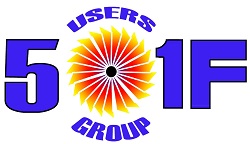The 501F Users group is well known for its collaborative brand of user roundtable discussions and robust forum. What follows are recaps of user presentations from their 2020 meeting. More details on these and access to both the 2020 and 2021 conference presentations and resources are available at the 501F Users Group website and forum.
Analysis of K-N steam-turbine vibrations, corrective actions, results
This presentation is recommended reading by all dealing with vibration issues on the No. 1 bearing for a Siemens KN steam turbine—a combination thrust/radial bearing at the front of the HP/IP section. It is based on a thorough analysis by one of the industry’s most experienced utility staff engineers and co-authored by the plant manager.
Some background notes: The steamer is an integral part of a 2 × 1 501FD-powered combined cycle, COD 2004, with a history of more than 2000 starts—up to 450 starts some years. Plant was sold by the IPP developer to the current utility owner in 2017. During the major inspection that year, work included the following: an OEM mod—hard-facing of bearing keys to address a fretting issue; high-speed shop balance; and KN coupling alignment. Post outage, the problematic bearing was reworked by the OEM three times in less than three years with changes made to bearing preload, clearances, etc, without resolving the vibration issue to the owner’s satisfaction.
Observations related to the vibration problem that helped to guide the ensuing analytical effort and corrective action included these:
-
- Bearing vibration above 9 mils peak-to-peak at high loads with duct firing and power augmentation (PAG).
- Small thrust movement (1 to 2 mils) might change vibration. Curtailment of PAG reduced vibration.
- Bearing seemed to like the thrust load in a specific direction.
- Unit may run fine in a 1 × 1 configuration (2 to 4 mils), then jump to 4 to 9 mils in 2 × 1.
- Problem seemed isolated to the No. 1 bearing.
More than half the presentation’s slides focused on the in-depth vibration analysis, with detailed drawings and charts of value to anyone similarly challenged. Among the findings of the outage taken in 2019 were the following:
-
- Keys were loose and seat worn, as the analytical work predicted.
- Bearing was aligned to the pedestal not to the journal. Elimination of the tapered gap allowed keys to fit as intended.
Results of the corrective actions taken included these:
-
- Vibration, which had been 4 to 9 mils at the No. 1 bearing, was reduced to 1.4 to 1.7 mils.
- Now there was nearly no vibration change with load change.
- Axial float near the assembled clearance was less than 12 mils, down from more than 20 mils.
The bottom line: The project was considered a success with the likely outcome that fretting may not increase clearances over time.
Lessons learned were several, with most applicable to many other plant challenges:
-
- Participate in users groups to gain the experience you might not have. Keep in mind, too, that you only get out what you put into any project. And, if you don’t share, don’t expect someone else to help you.
- Better to spend time analyzing data, and on understanding what to expect, than to go on a “witch-hunt” disassembly outage.
- Trust, but verify what’s being done, even it’s the experienced OEM doing the work.
- Never let a “good opinion” stand in the way of data, facts, figures, physics, etc.
- Check things out, document, take photos, understand what’s being done while the unit is apart—not after it doesn’t run well.
- An OEM data sheet may be signed off and a unit closed up, but if you don’t know how and where those data were sourced from, the data sheet is just a piece of paper.
- When your issues have been addressed unsuccessfully more than once, and there are reams of data not understood, don’t look for a “knight in white armor” to solve your problems. Own them!
GVPI stator-bar failures, lessons learned
This is a well-illustrated presentation many O&M technicians can learn from. It addresses the failures of two different SGEN6-1000A generators serving gas turbines in a 4 × 1 combined cycle. The four units are characterized by globally vacuum pressure impregnated (GVPI) stator windings.
The first failure was on a 245-MVA, 15-kV machine after nine years of operation. An incorrect cable termination was used during plant construction. The spec called for unshielded cable, but 2/0 shielded cable was used and the shielding was not removed for the approximately 8 in. needed at termination. Because the shielding was not stripped back, it was within strike distance when the fault occurred. The current jumped into the shield rather than travel in the cable conductor, thereby overheating and failing the cable.
The second unit failed a stator-winding hi-pot after 10 years of operation. The test target was 33 kV, 2.2 times rated voltage. In one phase a bar failed at 30 kV and in another phase a bar failed at 16 kV. Visual inspection showed an “insulation anomaly” on the top surface at core exit on both failed bars. Two other bars that had not failed also displayed the same insulation anomaly.
All four stator bars, plus one non-failed bar without ridge as baseline sample, were extracted for root-cause analysis. A full rewind was performed on this stator. The slides did not comment on the difficulties of removing bars from a GVPI winding.
A CT scan on two failed bars showed signs of what appeared to be insulation cracking internal to the bar at the location of the ridges on both bars that failed the hi-pot, as well as the other two bars with ridges in the insulation. These flaws would be a very serious concern to the fleet of similar units, but the slides did not comment on this issue.
Generator inspection findings
The inspection findings on a generator serving one of three gas turbines at this 501FD2-powered, 830-MW combined cycle, COD 2005, are well-illustrated in the presentation and would have value as a training tool.
Minor cracks and greasing are in evidence at non-critical locations in the connection rings, stator endwindings, and leads to high-voltage bushings. Plus, some greasing was found on back-of-core ventilation seals. Note that generator design relied heavily on bonding with epoxy between ties, blocking, and leads.
While the slides do not mention corrective actions taken, if any, they likely would have been minor given the satisfactory condition of the machine, as portrayed in the photos. Replacement of main flex leads during the outage was mentioned; however, this was done based on the OEM’s calendar-based recommendation, not because of damage or defect.
Integrating the direct-air-injection system into BOP operations
Uneven cooling of Siemens F-class gas turbines after shutdown sometimes leads to rubbing of turbine and/or compressor blades against the case. The OEM determined that by injecting cool air into the machine during shutdown, a homogeneous mixture of air can keep the top and bottom of the unit at roughly the same temperature and eliminate case bowing.
The standard OEM-supplied direct-air injection system (DAIS) would have used a stand-alone air compressor and injection hardware for each 501FD3 (with partial FD6 upgrade) at this 535-MW 2 × 1 combined cycle. However, plant engineers saw an opportunity to do more with the DAIS compressors.
It installed variable-speed compressors instead of the OEM-supplied conventional air packages and incorporated them into the plant’s original air system, plus the piping system that extracts air from the cold-air side of the rotor air coolers (RAC, a/k/a kettle boilers). A slide in the presentation provides a system diagram.
Given the RAC cold-air side temperature is 390F or above, an additional air-to-air exchanger with a variable-speed fan was installed to reduce that temperature to less than 100F. Extraction air, from either the Unit 1 or Unit 2 compressor, is supplied to a common header that can satisfy BOP air requirements as well as the DAIS needs for an offline turbine.
Benefits of this lineup include the following:
-
- The original BOP service compressors rarely operate.
- GT extraction air typically supplies all of the plant’s needs.
- If no gas-turbine compressor air is available, the DAIS units supply plant air.
- Energy is saved—about 680 MWh annually.
Combined-cycle upgrade to T3000 V8.2
Owner/operators planning a control-system upgrade from T3000 to T3000 Version 8.2 would benefit from reviewing the project overview and management and execution slides provided by staff at a plant that recently converted two 2 × 1 power blocks to V8.2. The gas turbines at this facility are 501FD2s, the steam turbines are KNs.
A few of the lessons learned shared at the meeting are these:
-
- During the initial meeting with the OEM, ask for a full explanation of the major differences between your system and the upgrade—such as PI interface platform, hardware, etc.
- Get your company’s PI administrator involved at the beginning of the project.
- Obtain the Modbus list for all third-party interfaces.
- Keep the existing T3000 application server powered up and use it as a reference.
- The more control-room operator eyes the better.
Penflex pipe failure experience
Plant experienced a step change of 4 deg F in the flashback temperature expected on one combustor. Two days later there was an additional step change of 8 deg F. These step changes corresponded to a blade-path temperature shift of about 15 deg F from the expected value.
The combustor section was inspected and a Row 1 vane was found with a heavy breach and an adjacent vane with moderate erosion/possible breach. Siemens opened the unit finding several parts burned up; plus, the Penflex pipe on the right-side top had failed. A full combustion inspection was conducted.
Investigators did not attribute the R1 problem to the Penflex pipe failure. The damaged pipe was replaced. None of the Penflex pipes on the unit showed any damage.






